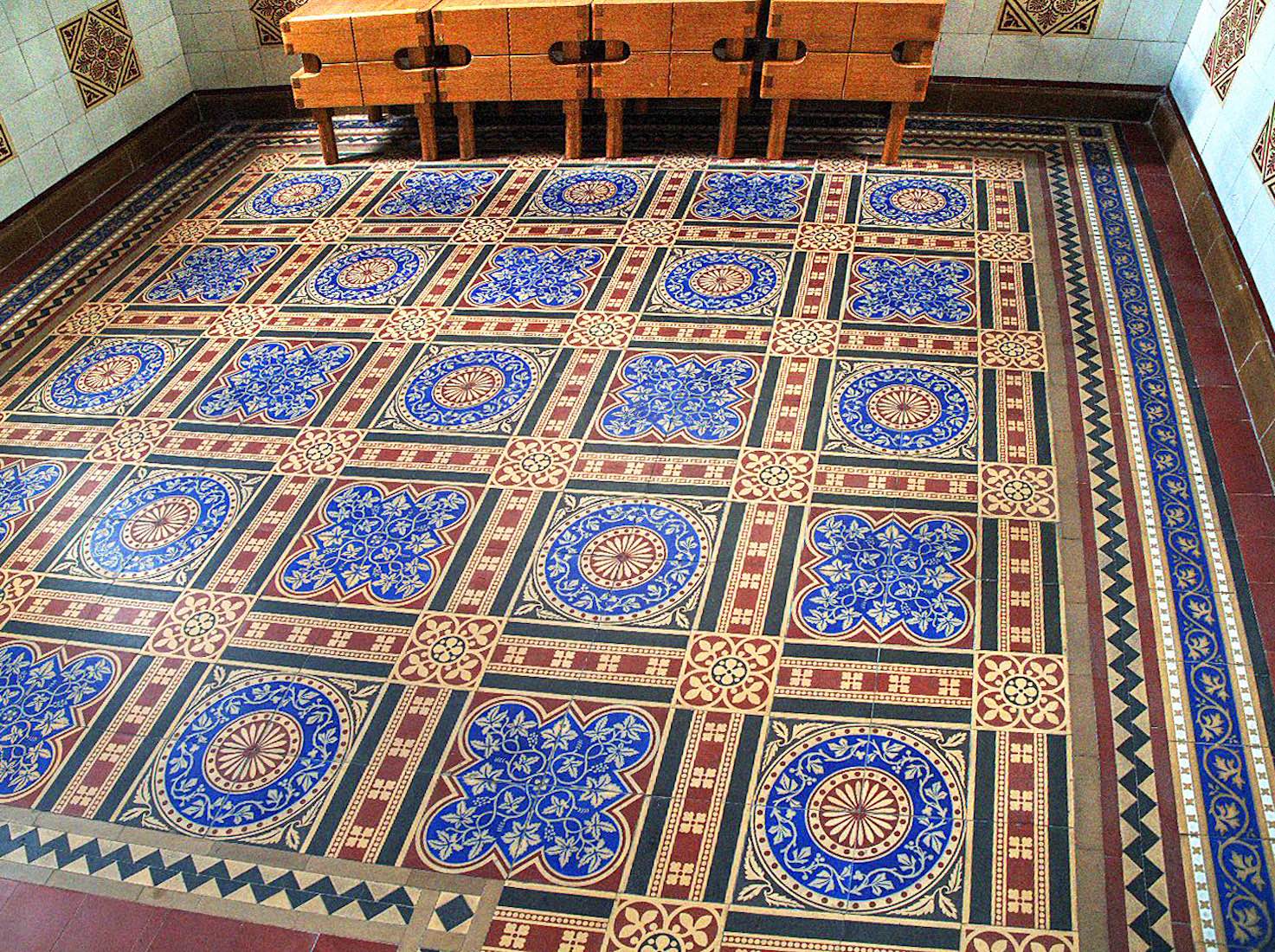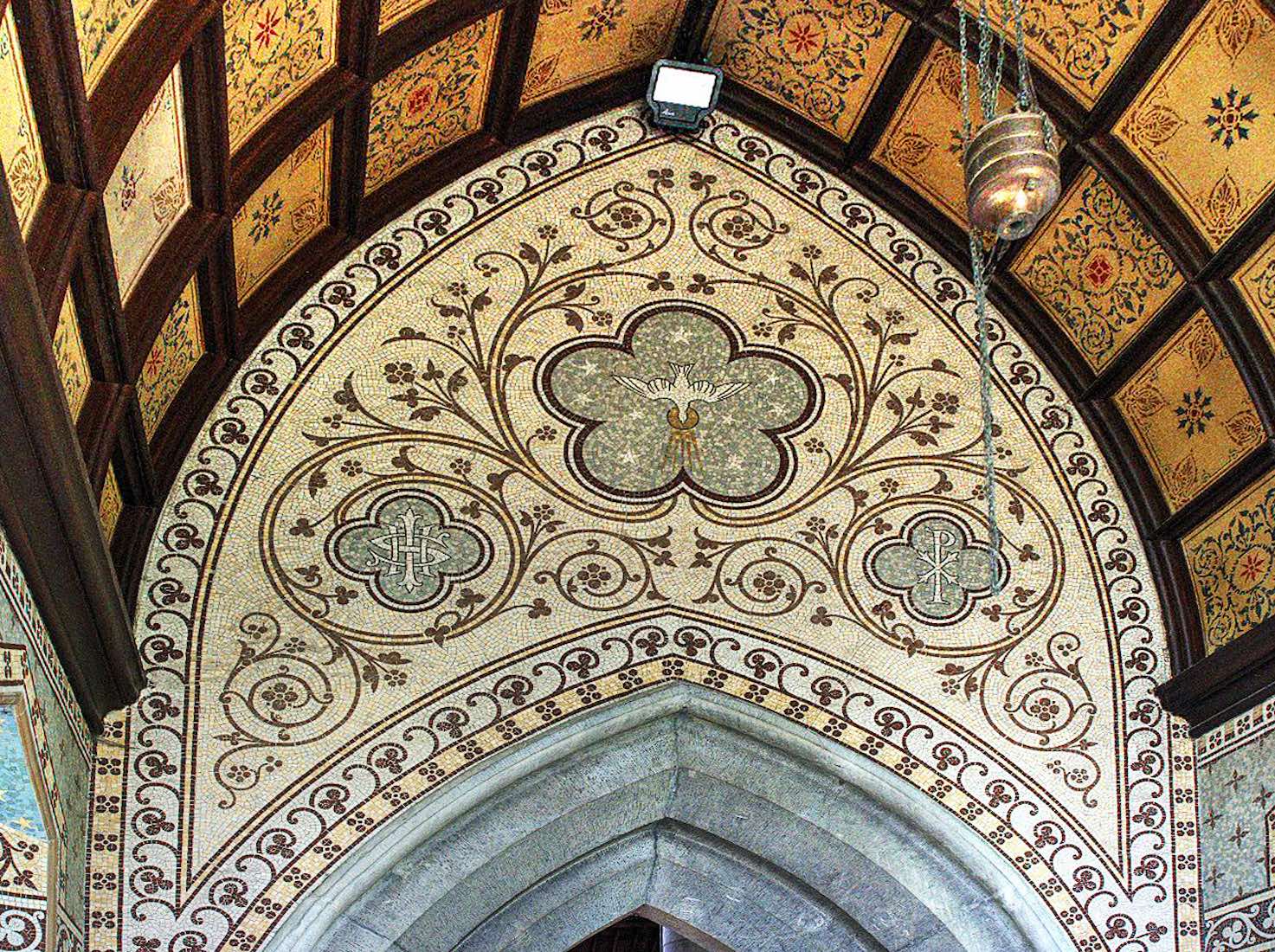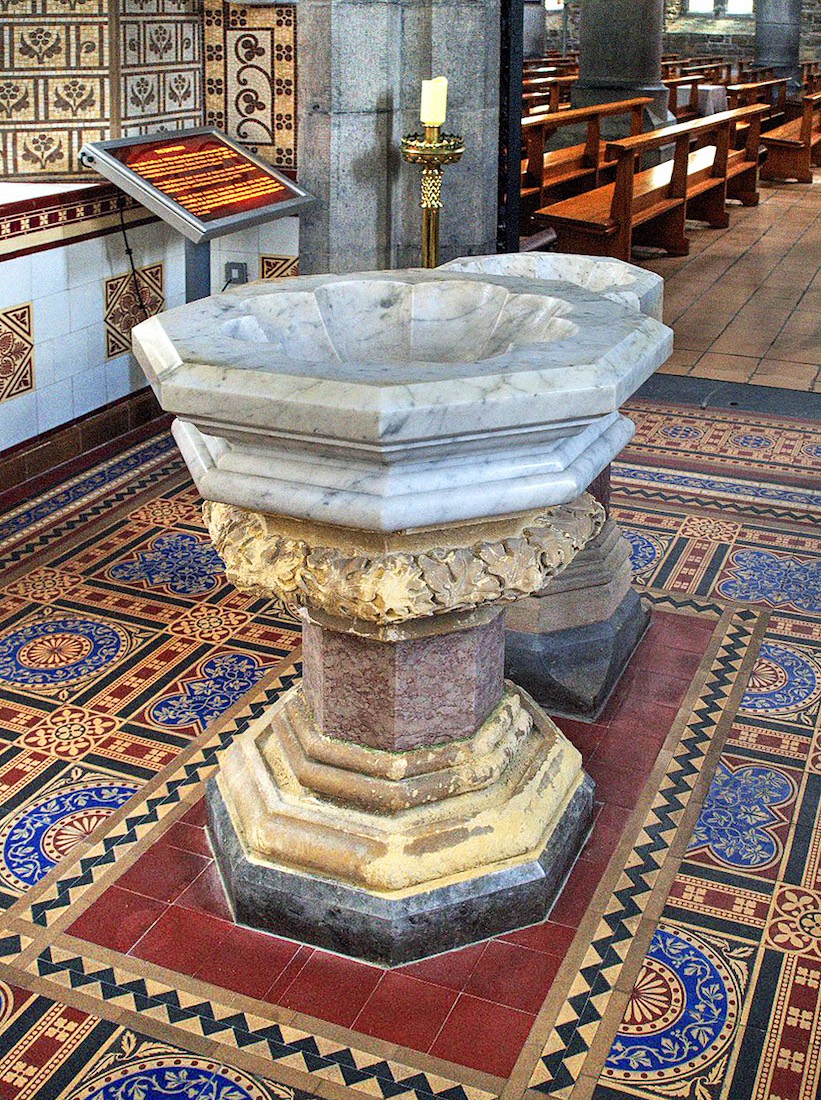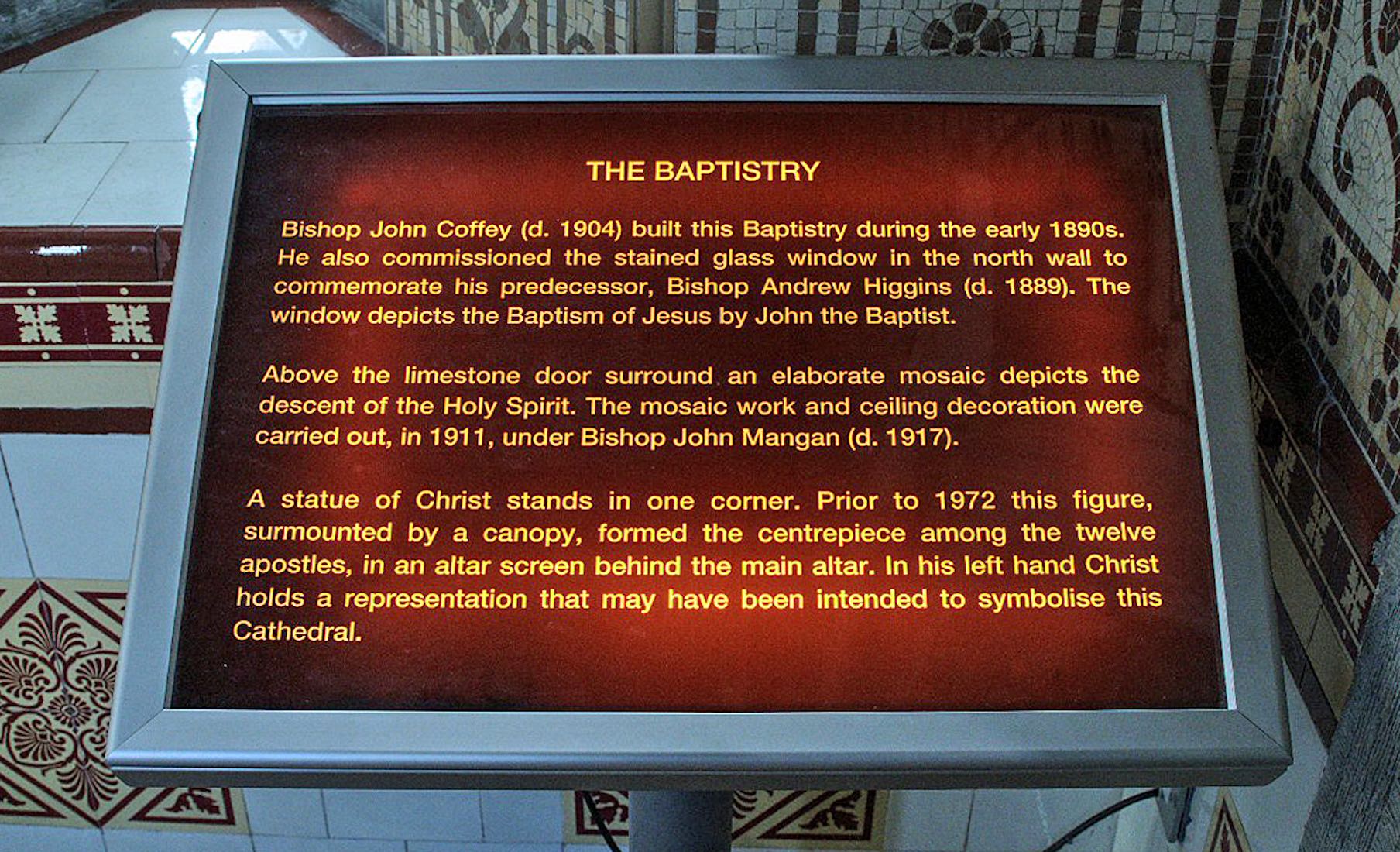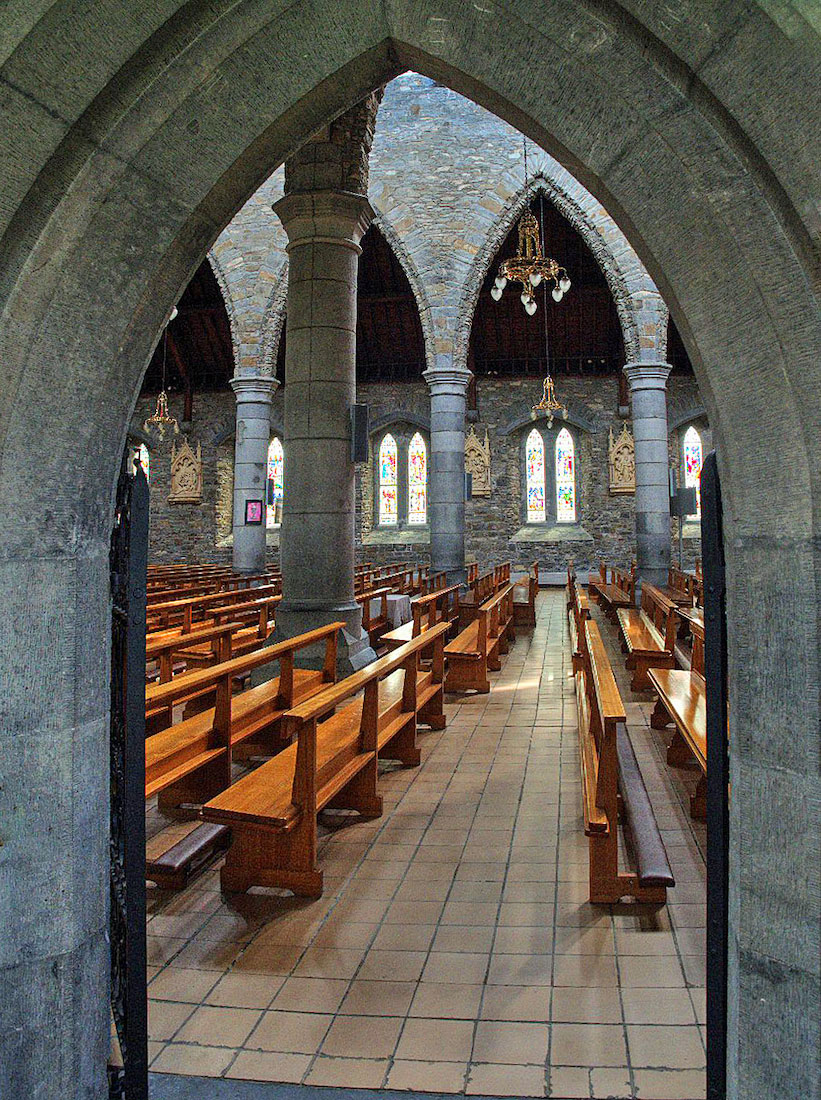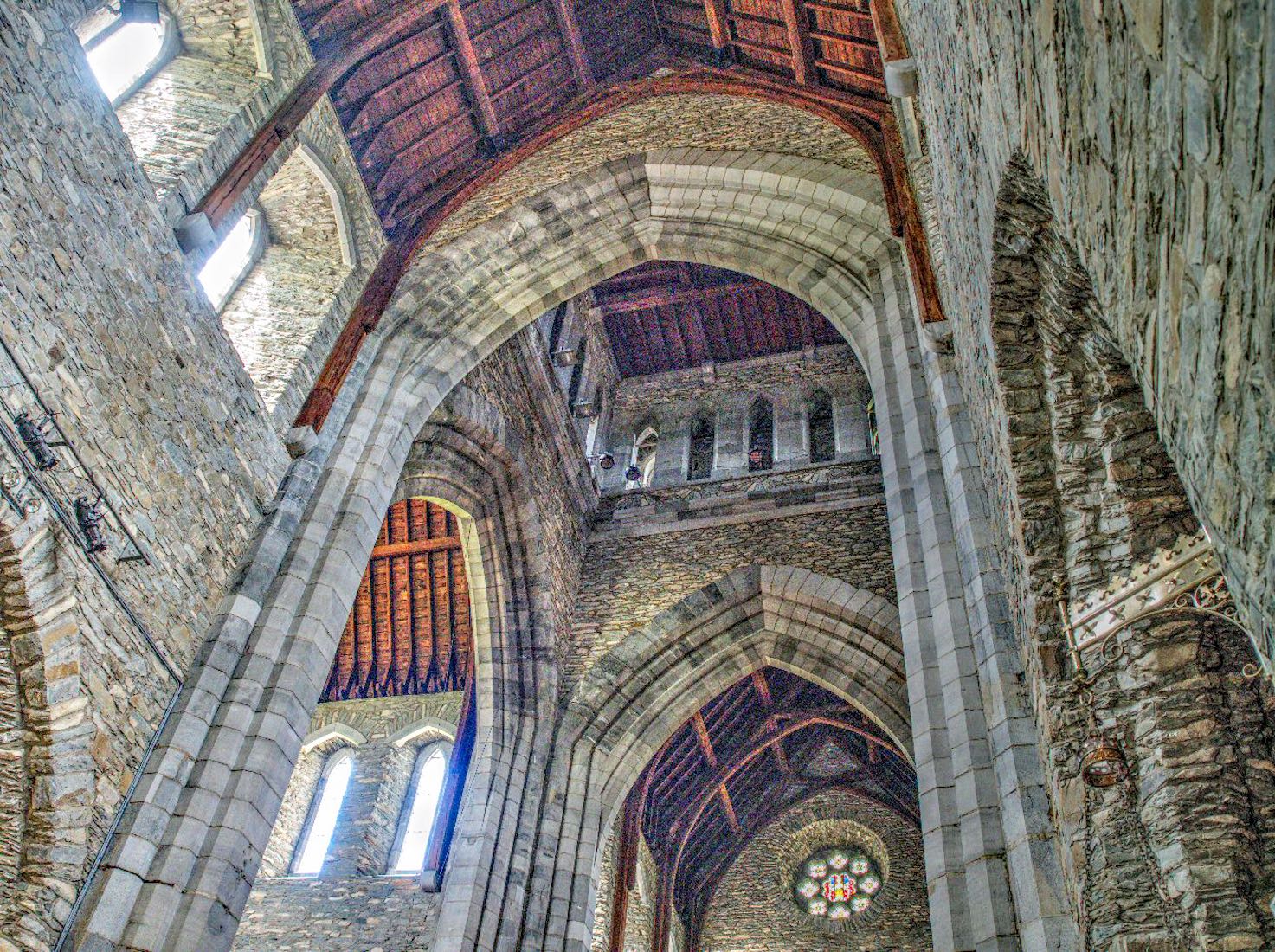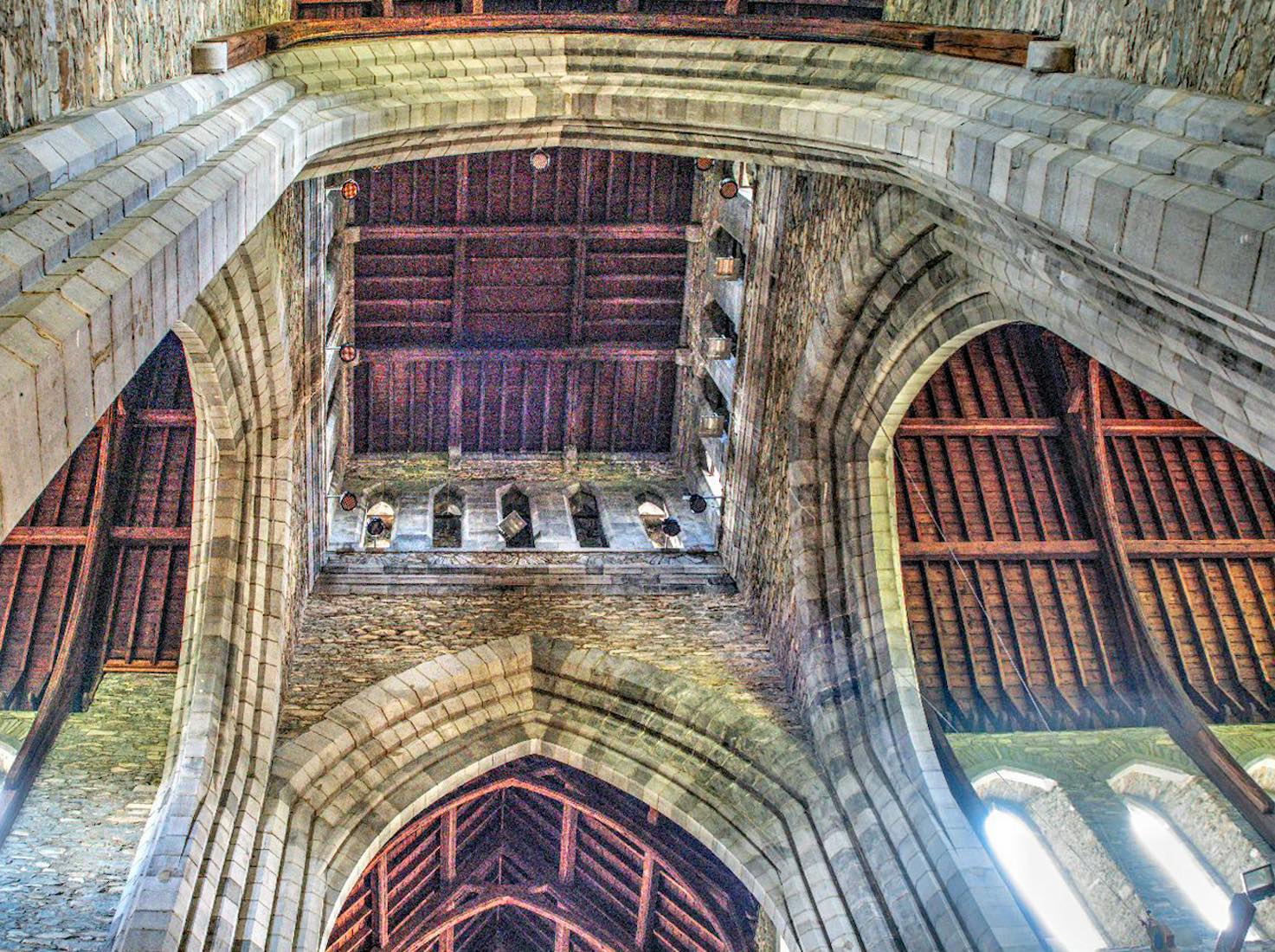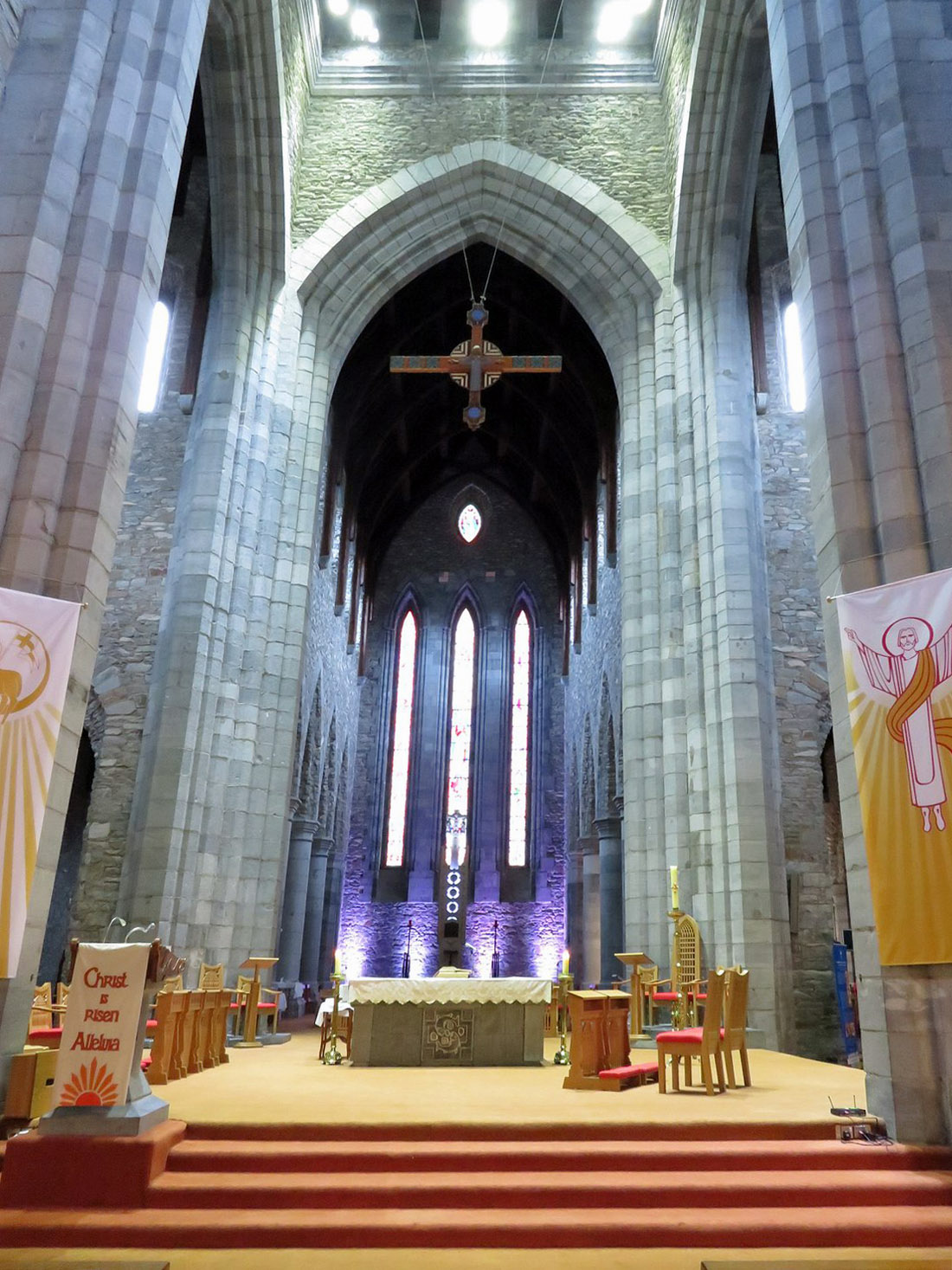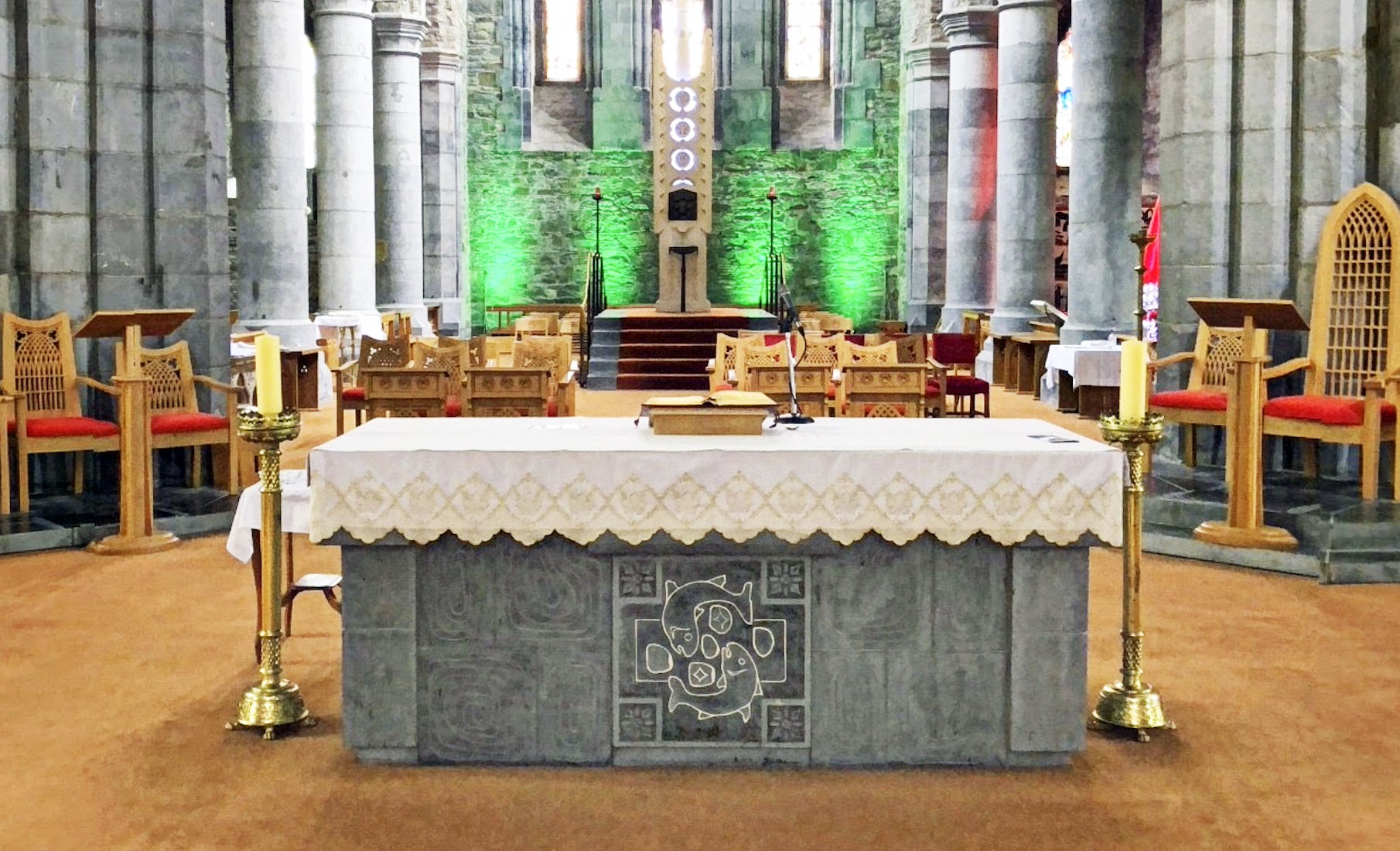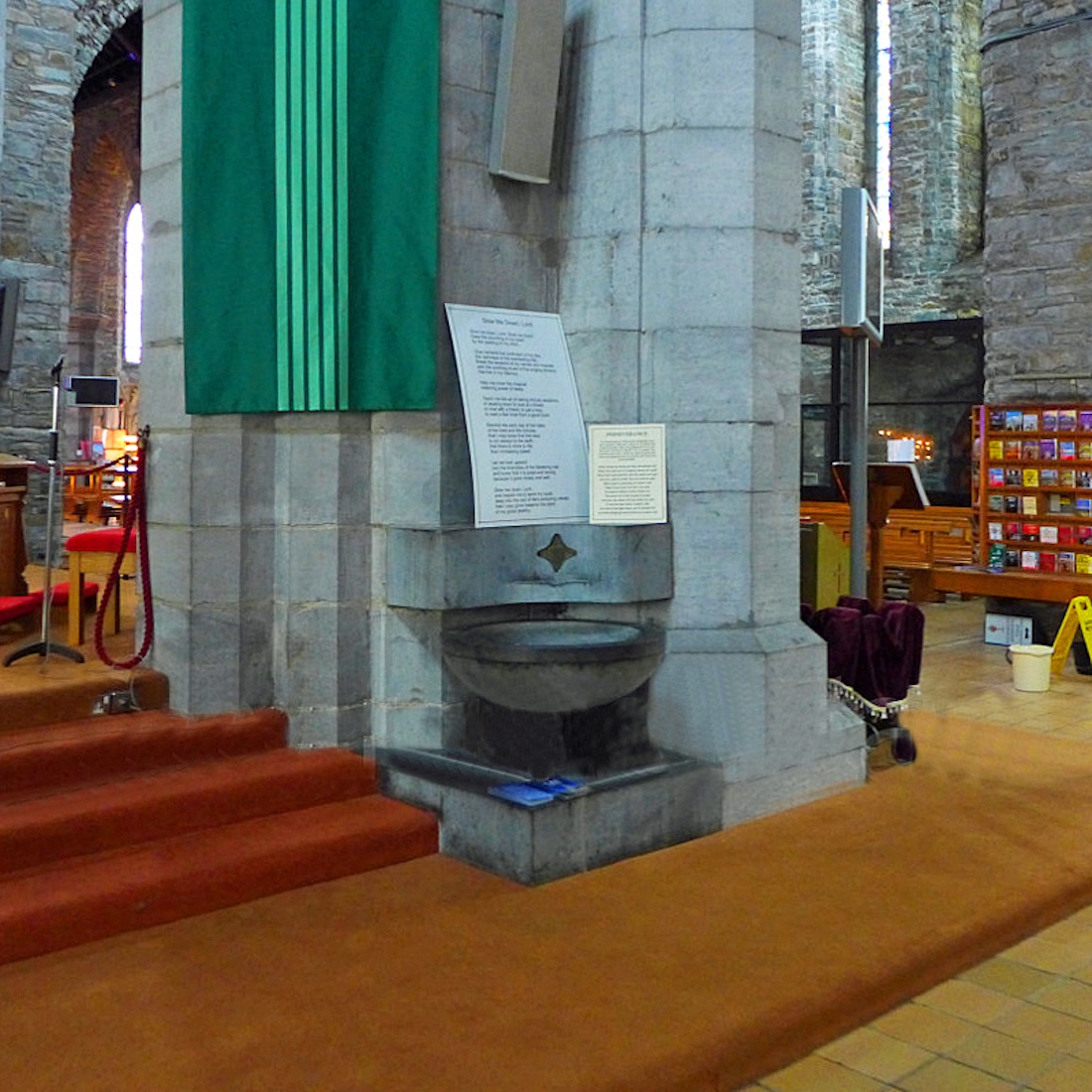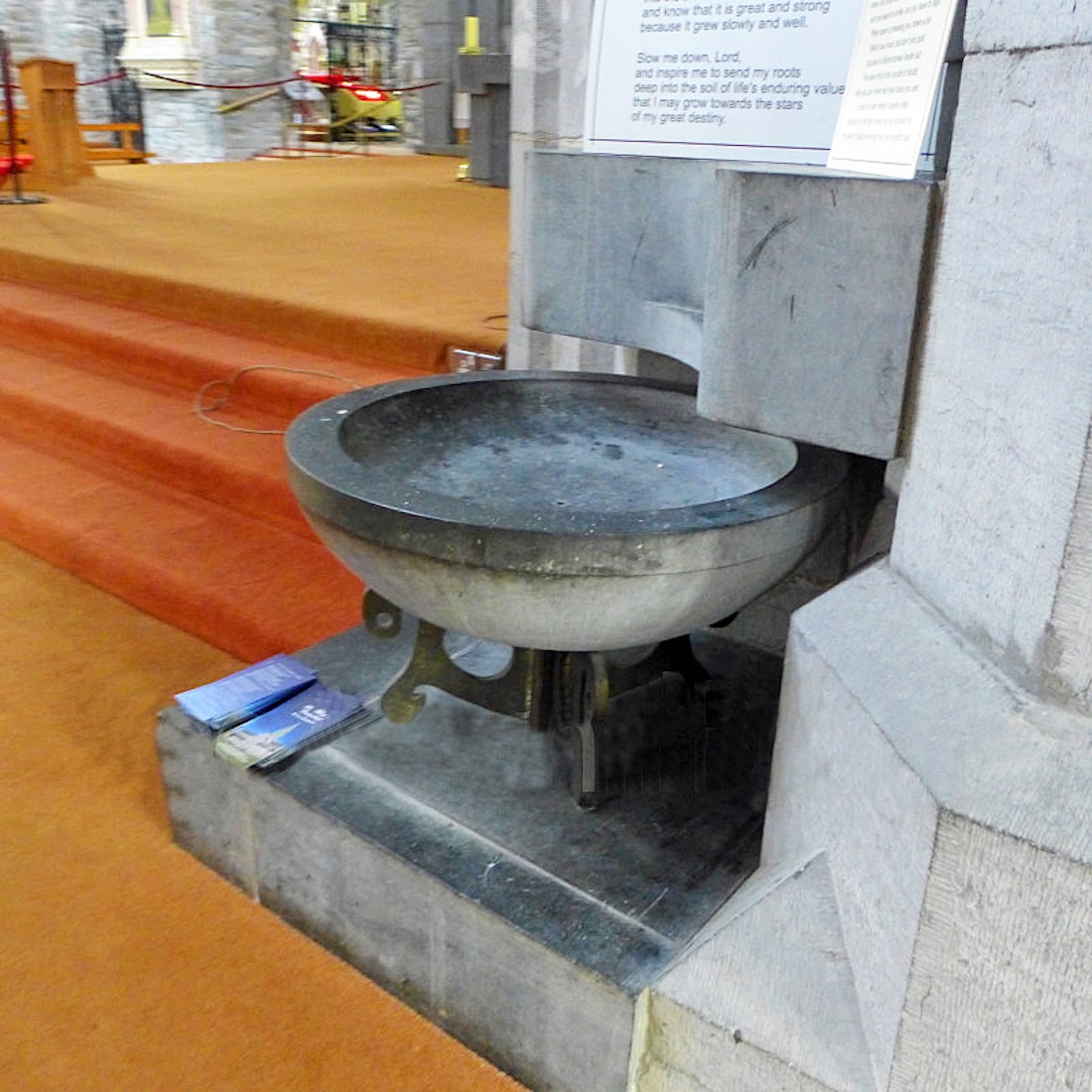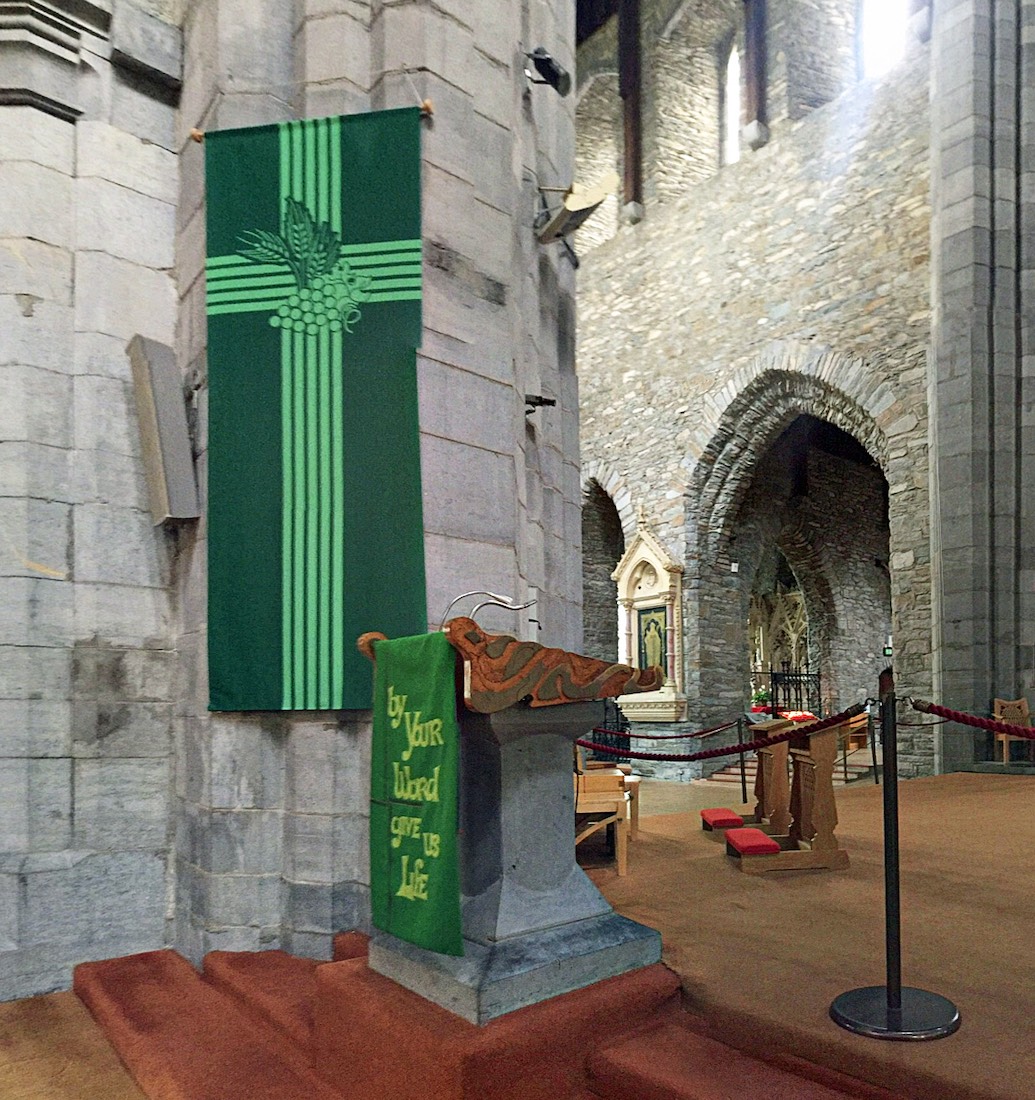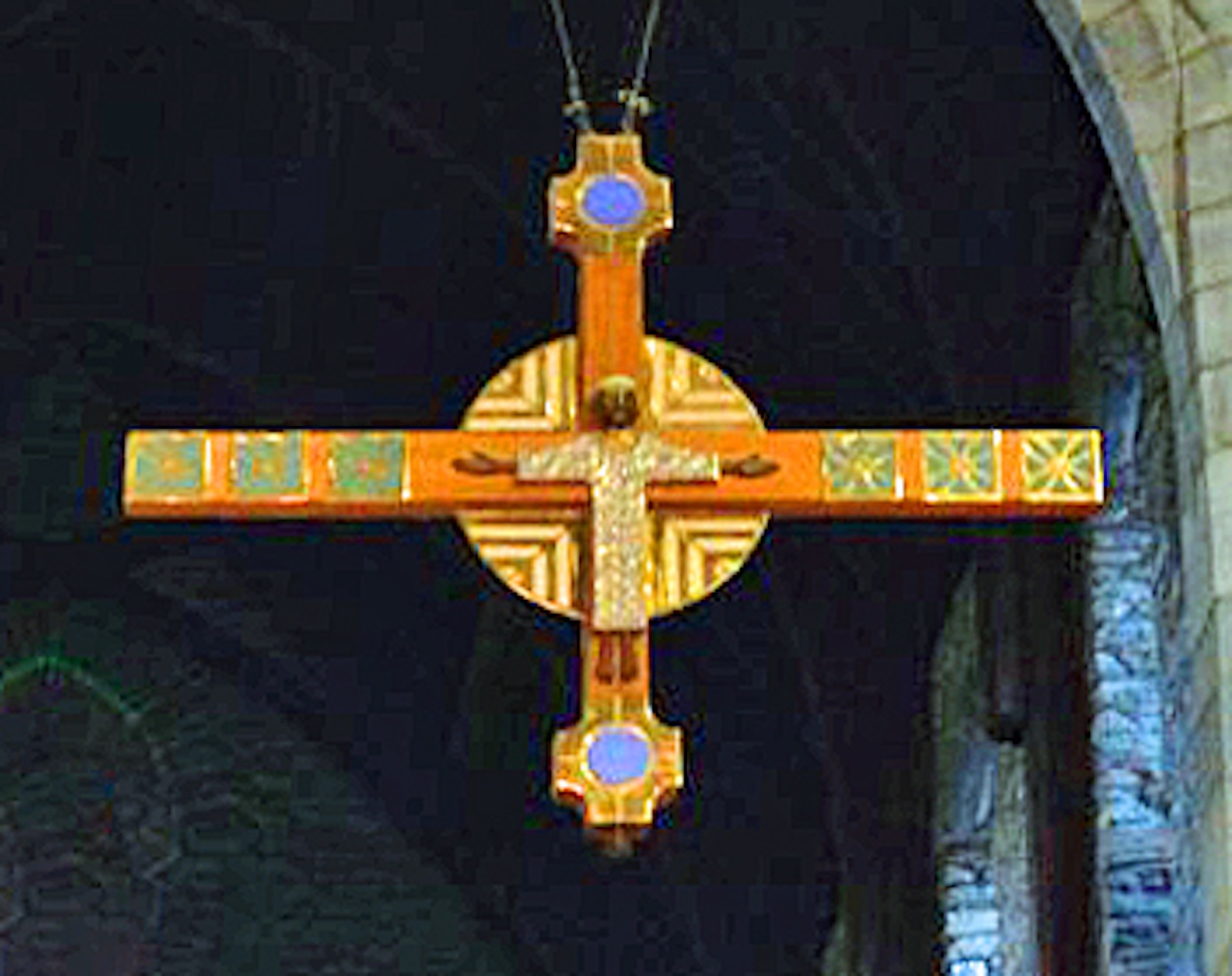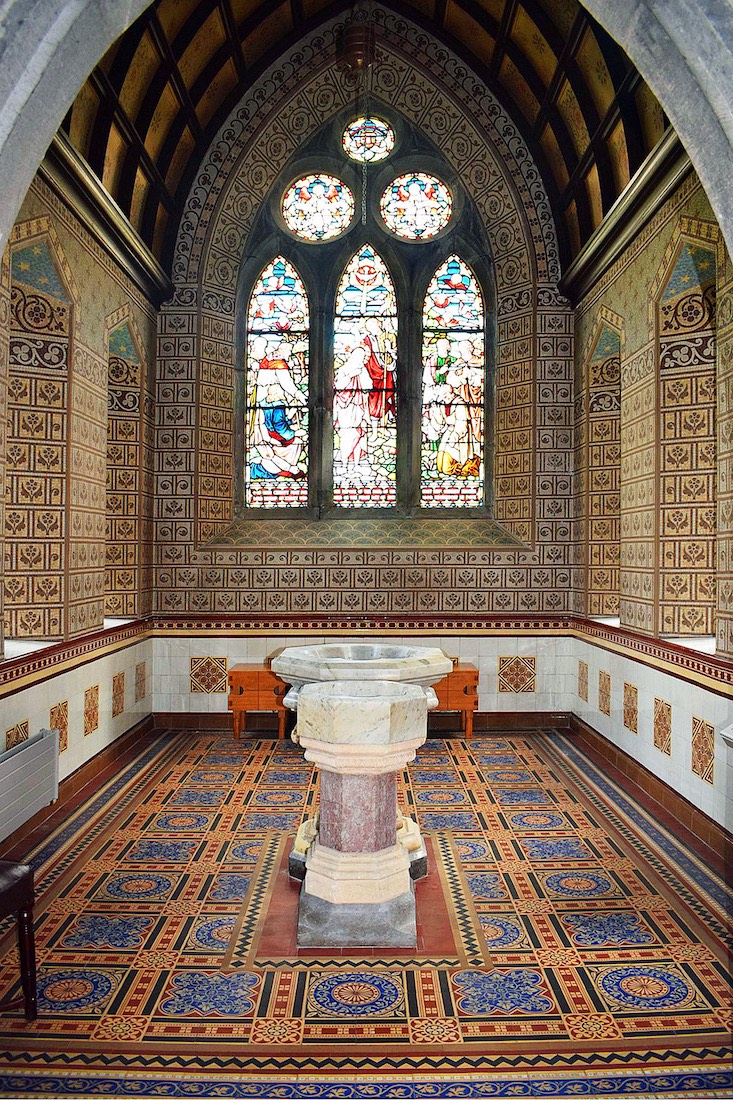
The baptistry on the Northern side of the nave is also spectacular. It has an unusual double baptismal font. [Photo Credit: TA Jo Vandebrouck] INDEX
C2. CRUCIFIX AND NORTH WINDOW CD
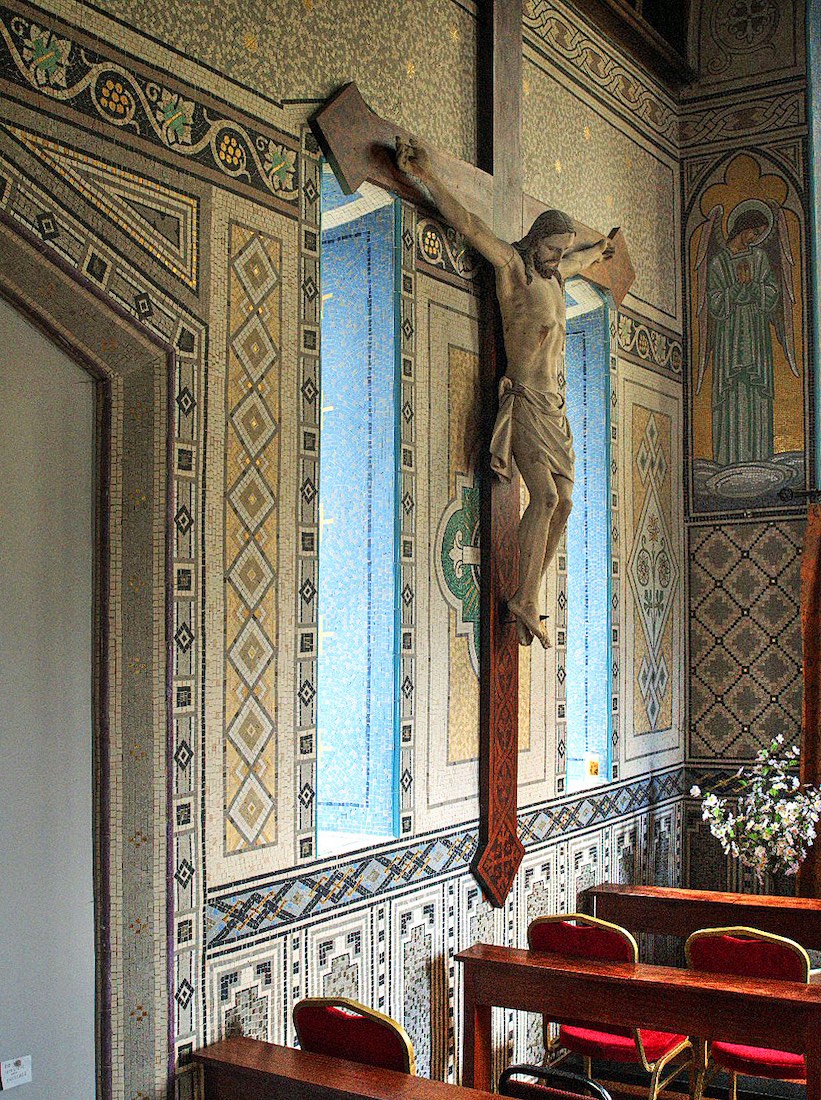

A crucifix is shown here, attached to the West wall of the baptistry. Sometimes it appears in other locations within the Cathedral.
C3. TILING CD
The floor is covered with an amazing set of colourful tiles. Such tiles are a feature of Irish churches and cathedrals – something to look forward to!
C4. MOSAIC ARCH CD
The walls and ceiling of the baptistry are also highly decorated. The mosaic above the door dates from 1911, and shows the descent of the Holy Spirit – a feature of the story of the Baptism of Jesus.
C5. FONT CD
The unusual double font stands in the centre of the baptistry. As we have seen a new font has been placed near the front of the nave. An information board can be seen against the far wall.
C6. BAPTISTRY INFORMATION BOARD CD
The information board contains useful information about the baptistry, telling of its construction in the early 1890s.
C7. LEAVING THE BAPTISTRY CD
We leave the baptistry, and make our way to the crossing at the front of the nave.
D2. CROSSING TA
The crossing is defined by a raised platform with the four corner columns. At centre is the nave altar, and beyond at right, the cathedra or Bishop’s throne. The sanctuary lies behind. [Photo Credit: VW49]
D3. NAVE ALTAR GSV
The nave altar is a main focus for worship services. The previous high altar was removed in the 1970s in line with Vatican direction, leading to the present arrangement. This altar has an interesting front logo with two fish. The fish has an interesting history as a Christian symbol. The Greek word for fish is ‘ichthys’. As early as the first century, Christians made an acrostic from this word: Iesous Christos Theou Yios Soter, meaning Jesus Christ, Son of God, Saviour. [Photo Credit: GSV Matt Wright]
D4. FRONT FONT SAB SAB
In the reworking of the Cathedral in 1972 - 1973, a new font consisting of a limestone bowl was fitted in the angle between the Southwest pier of the crossing and the first pier of the South nave arcade.
D5. AMBO GSV
In the Northwest corner of the crossing stands an ambo – the large pulpit or reading desk found in many Catholic churches. [Photo Credit: GSV Roberto M]
D6. ROOD CROSS TA
High above the crossing hangs a modern version of the rood cross. ‘Rood’ is an archaic word for pole, and was originally the only Old English word for the instrument of Jesus Christ’s death. The term is used these days for a cross which hangs above the entrance to the chancel. [Photo Credit: TA Vicki802]


